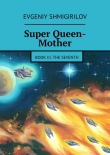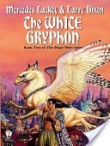
Текст книги "The British Study Edition of the Urantia Papers"
Автор книги: Tigran Aivazian
Жанр:
Религия
сообщить о нарушении
Текущая страница: 124 (всего у книги 295 страниц)
80:3.1 The ancient centres of the culture of the blue man were located along all the rivers of Europe, but only the Somme now flows in the same channel which it followed during preglacial times.
80:3.2 While we speak of the blue man as pervading the European continent, there were scores of racial types. Even 35,000 years ago the European blue races were already a highly blended people carrying strains of both red and yellow, while on the Atlantic coastlands and in the regions of present-day Russia they had absorbed a considerable amount of Andonite blood and to the south were in contact with the Saharan peoples. But it would be fruitless to attempt to enumerate the many racial groups.
80:3.3 The European civilization of this early post-Adamic period was a unique blend of the vigour and art of the blue men with the creative imagination of the Adamites. The blue men were a race of great vigour, but they greatly deteriorated the cultural and spiritual status of the Adamites. It was very difficult for the latter to impress their religion upon the Cro-Magnoids because of the tendency of so many to cheat and to debauch the maidens. For 10,000 years religion in Europe was at a low ebb as compared with the developments in India and Egypt.
80:3.4 The blue men were perfectly honest in all their dealings and were wholly free from the sexual vices of the mixed Adamites. They respected maidenhood, only practising polygamy when war produced a shortage of males.
80:3.5 These Cro-Magnon peoples were a brave and farseeing race. They maintained an efficient system of child culture. Both parents participated in these labours, and the services of the older children were fully utilized. Each child was carefully trained in the care of the caves, in art, and in flint making. At an early age the women were well versed in the domestic arts and in crude agriculture, while the men were skilled hunters and courageous warriors.
80:3.6 The blue men were hunters, fishers, and food gatherers; they were expert boatbuilders. They made stone axes, cut down trees, erected log huts, partly below ground and roofed with hides. And there are peoples who still build similar huts in Siberia. The southern Cro-Magnons generally lived in caves and grottoes.
80:3.7 It was not uncommon during the rigors of winter for their sentinels standing on night guard at cave entrances to freeze to death. They had courage, but above all they were artists; the Adamic mixture suddenly accelerated creative imagination. The height of the blue man’s art was about 15,000 years ago, before the days when the darker-skinned races came north from Africa through Spain.
80:3.8 ¶ About 15,000 years ago the Alpine forests were spreading extensively. The European hunters were being driven to the river valleys and to the seashores by the same climatic coercion that had turned the world’s happy hunting grounds into dry and barren deserts. As the rain winds shifted to the north, the great open grazing lands of Europe became covered by forests. These great and relatively sudden climatic modifications drove the races of Europe to change from open-space hunters to herders, and in some measure to fishers and tillers of the soil.
80:3.9 These changes, while resulting in cultural advances, produced certain biologic retrogressions. During the previous hunting era the superior tribes had intermarried with the higher types of war captives and had unvaryingly destroyed those whom they deemed inferior. But as they commenced to establish settlements and engage in agriculture and commerce, they began to save many of the mediocre captives as slaves. And it was the progeny of these slaves that subsequently so greatly deteriorated the whole Cro-Magnon type. This retrogression of culture continued until it received a fresh impetus from the east when the final and en masse invasion of the Mesopotamians swept over Europe, quickly absorbing the Cro-Magnon type and culture and initiating the civilization of the white races.
4. THE ANDITE INVASIONS OF EUROPE80:4.1 While the Andites poured into Europe in a steady stream, there were seven major invasions, the last arrivals coming on horseback in three great waves. Some entered Europe by way of the islands of the Aegean and up the Danube valley, but the majority of the earlier and purer strains migrated to north-western Europe by the northern route across the grazing lands of the Volga and the Don.
80:4.2 Between the third and fourth invasions a horde of Andonites entered Europe from the north, having come from Siberia by way of the Russian rivers and the Baltic. They were immediately assimilated by the northern Andite tribes.
80:4.3 The earlier expansions of the purer violet race were far more pacific than were those of their later semimilitary and conquest-loving Andite descendants. The Adamites were pacific; the Nodites were belligerent. The union of these stocks, as later mingled with the Sangik races, produced the able, aggressive Andites who made actual military conquests.
80:4.4 ¶ But the horse was the evolutionary factor which determined the dominance of the Andites in the Occident. The horse gave the dispersing Andites the hitherto nonexistent advantage of mobility, enabling the last groups of Andite cavalrymen to progress quickly around the Caspian Sea to overrun all of Europe. All previous waves of Andites had moved so slowly that they tended to disintegrate at any great distance from Mesopotamia. But these later waves moved so rapidly that they reached Europe as coherent groups, still retaining some measure of higher culture.
80:4.5 The whole inhabited world, outside of China and the Euphrates region, had made very limited cultural progress for 10,000 years when the hard-riding Andite horsemen made their appearance in the sixth and seventh millenniums before Christ. As they moved westward across the Russian plains, absorbing the best of the blue man and exterminating the worst, they became blended into one people. These were the ancestors of the so-called Nordic races, the forefathers of the Scandinavian, German, and Anglo-Saxon peoples.
80:4.6 ¶ It was not long before the superior blue strains had been fully absorbed by the Andites throughout all northern Europe. Only in Lapland (and to a certain extent in Brittany) did the older Andonites retain even a semblance of identity.
5. THE ANDITE CONQUEST OF NORTHERN EUROPE80:5.1 The tribes of northern Europe were being continuously reinforced and upstepped by the steady stream of migrants from Mesopotamia through the Turkestan-south Russian regions, and when the last waves of Andite cavalry swept over Europe, there were already more men with Andite inheritance in that region than were to be found in all the rest of the world.
80:5.2 For 3,000 years the military headquarters of the northern Andites was in Denmark. From this central point there went forth the successive waves of conquest, which grew decreasingly Andite and increasingly white as the passing centuries witnessed the final blending of the Mesopotamian conquerors with the conquered peoples.
80:5.3 ¶ While the blue man had been absorbed in the north and eventually succumbed to the white cavalry raiders who penetrated the south, the advancing tribes of the mixed white race met with stubborn and protracted resistance from the Cro-Magnons, but superior intelligence and ever-augmenting biologic reserves enabled them to wipe the older race out of existence.
80:5.4 The decisive struggles between the white man and the blue man were fought out in the valley of the Somme. Here, the flower of the blue race bitterly contested the southward-moving Andites, and for over 500 years these Cro-Magnoids successfully defended their territories before succumbing to the superior military strategy of the white invaders. Thor, the victorious commander of the armies of the north in the final battle of the Somme, became the hero of the northern white tribes and later on was revered as a god by some of them.
80:5.5 ¶ The strongholds of the blue man which persisted longest were in southern France, but the last great military resistance was overcome along the Somme. The later conquest progressed by commercial penetration, population pressure along the rivers, and by continued intermarriage with the superiors, coupled with the ruthless extermination of the inferiors.
80:5.6 When the tribal council of the Andite elders had adjudged an inferior captive to be unfit, he was, by elaborate ceremony, committed to the shaman priests, who escorted him to the river and administered the rites of initiation to the “happy hunting grounds” – lethal submergence. In this way the white invaders of Europe exterminated all peoples encountered who were not quickly absorbed into their own ranks, and thus did the blue man come to an end – and quickly.
80:5.7 ¶ The Cro-Magnoid blue man constituted the biologic foundation for the modern European races, but they have survived only as absorbed by the later and virile conquerors of their homelands. The blue strain contributed many sturdy traits and much physical vigour to the white races of Europe, but the humour and imagination of the blended European peoples were derived from the Andites. This Andite-blue union, resulting in the northern white races, produced an immediate lapse of Andite civilization, a retardation of a transient nature. Eventually, the latent superiority of these northern barbarians manifested itself and culminated in present-day European civilization.
80:5.8 ¶ By 5000 B.C. the evolving white races were dominant throughout all of northern Europe, including northern Germany, northern France, and the British Isles. Central Europe was for some time[1] [1]
some time, In 1955 text: sometime. The two-word form is correct as the reference is to an indefinite period of time rather than to an indefinite point in time (See Webster’s).
[Закрыть] controlled by the blue man and the round-headed Andonites. The latter were mainly situated in the Danube valley and were never entirely displaced by the Andites.
80:6.1 From the times of the terminal Andite migrations, culture declined in the Euphrates valley, and the immediate centre of civilization shifted to the valley of the Nile. Egypt became the successor of Mesopotamia as the headquarters of the most advanced group on earth.
80:6.2 The Nile valley began to suffer from floods shortly before the Mesopotamian valleys but fared much better. This early setback was more than compensated by the continuing stream of Andite immigrants, so that the culture of Egypt, though really derived from the Euphrates region, seemed to forge ahead. But in 5000 B.C., during the flood period in Mesopotamia, there were seven distinct groups of human beings in Egypt; all of them, save one, came from Mesopotamia.
80:6.3 ¶ When the last exodus from the Euphrates valley occurred, Egypt was fortunate in gaining so many of the most skillful artists and artisans. These Andite artisans found themselves quite at home in that they were thoroughly familiar with river life, its floods, irrigations, and dry seasons. They enjoyed the sheltered position of the Nile valley; they were there much less subject to hostile raids and attacks than along the Euphrates. And they added greatly to the metalworking skill of the Egyptians. Here they worked iron ores coming from Mount Sinai instead of from the Black Sea regions.
80:6.4 ¶ The Egyptians very early assembled their municipal deities into an elaborate national system of gods. They developed an extensive theology and had an equally extensive but burdensome priesthood. Several different leaders sought to revive the remnants of the early religious teachings of the Sethites, but these endeavours were short-lived. The Andites built the first stone structures in Egypt. The first and most exquisite of the stone pyramids was erected by Imhotep, an Andite architectural genius, while serving as prime minister. Previous buildings had been constructed of brick, and while many stone structures had been erected in different parts of the world, this was the first in Egypt. But the art of building steadily declined from the days of this great architect.
80:6.5 This brilliant epoch of culture was cut short by internal warfare along the Nile, and the country was soon overrun, as Mesopotamia had been, by the inferior tribes from inhospitable Arabia and by the blacks from the south. As a result, social progress steadily declined for more than 500 years.
7. ANDITES OF THE MEDITERRANEAN ISLES80:7.1 During the decline of culture in Mesopotamia there persisted for some time a superior civilization on the islands of the eastern Mediterranean.
80:7.2 About 12,000 B.C. a brilliant tribe of Andites migrated to Crete. This was the only island settled so early by such a superior group, and it was almost 2,000 years before the descendants of these mariners spread to the neighbouring isles. This group were the narrow-headed, smaller-statured Andites who had intermarried with the Vanite division of the northern Nodites. They were all under 1.8 m in height and had been literally driven off the mainland by their larger and inferior fellows. These emigrants to Crete were highly skilled in textiles, metals, pottery, plumbing, and the use of stone for building material. They engaged in writing and carried on as herders and agriculturists.
80:7.3 Almost 2,000 years after the settlement of Crete a group of the tall descendants of Adamson made their way over the northern islands to Greece, coming almost directly from their highland home north of Mesopotamia. These progenitors of the Greeks were led westward by Sato, a direct descendant of Adamson and Ratta.
80:7.4 The group which finally settled in Greece consisted of 375 of the selected and superior people comprising the end of the second civilization of the Adamsonites. These later sons of Adamson carried the then most valuable strains of the emerging white races. They were of a high intellectual order and, physically regarded, the most beautiful of men since the days of the first Eden.
80:7.5 ¶ Presently Greece and the Aegean Islands region succeeded Mesopotamia and Egypt as the Occidental centre of trade, art, and culture. But as it was in Egypt, so again practically all of the art and science of the Aegean world was derived from Mesopotamia except for the culture of the Adamsonite forerunners of the Greeks. All the art and genius of these latter people is a direct legacy of the posterity of Adamson, the first son of Adam and Eve, and his extraordinary second wife, a daughter descended in an unbroken line from the pure Nodite staff of Prince Caligastia. No wonder the Greeks had mythological traditions that they were directly descended from gods and superhuman beings.
80:7.6 The Aegean region passed through five distinct cultural stages, each less spiritual than the preceding, and ere long the last glorious era of art perished beneath the weight of the rapidly multiplying mediocre descendants of the Danubian slaves who had been imported by the later generations of Greeks.
80:7.7 It was during this age in Crete that the mother cult of the descendants of Cain attained its greatest vogue. This cult glorified Eve in the worship of the “great mother.” Images of Eve were everywhere. Thousands of public shrines were erected throughout Crete and Asia Minor. And this mother cult persisted on down to the times of Christ, becoming later incorporated in the early Christian religion under the guise of the glorification and worship of Mary the earth mother of Jesus.
80:7.8 ¶ By about 6500 B.C. there had occurred a great decline in the spiritual heritage of the Andites. The descendants of Adam were widespreadly dispersed and had been virtually swallowed up in the older and more numerous human races. And this decadence of Andite civilization, together with the disappearance of their religious standards, left the spiritually impoverished races of the world in a deplorable condition.
80:7.9 ¶ By 5000 B.C. the three purest strains of Adam’s descendants were in Sumeria, northern Europe, and Greece. The whole of Mesopotamia was being slowly deteriorated by the stream of mixed and darker races which filtered in from Arabia. And the coming of these inferior peoples contributed further to the scattering abroad of the biologic and cultural residue of the Andites. From all over the fertile crescent the more adventurous peoples poured westward to the islands. These migrants cultivated both grain and vegetables, and they brought domesticated animals with them.
80:7.10 About 5000 B.C. a mighty host of progressive Mesopotamians moved out of the Euphrates valley and settled upon the island of Cyprus; this civilization was wiped out about 2,000 years subsequently by the barbarian hordes from the north.
80:7.11 ¶ Another great colony settled on the Mediterranean near the later site of Carthage. And from north Africa large numbers of Andites entered Spain and later mingled in Switzerland with their brethren who had earlier come to Italy from the Aegean Islands.
80:7.12 ¶ When Egypt followed Mesopotamia in cultural decline, many of the more able and advanced families fled to Crete, thus greatly augmenting this already advanced civilization. And when the arrival of inferior groups from Egypt later threatened the civilization of Crete, the more cultured families moved on west to Greece.
80:7.13 ¶ The Greeks were not only great teachers and artists, they were also the world’s greatest traders and colonizers. Before succumbing to the flood of inferiority which eventually engulfed their art and commerce, they succeeded in planting so many outposts of culture to the west that a great many of the advances in early Greek civilization persisted in the later peoples of southern Europe, and many of the mixed descendants of these Adamsonites became incorporated in the tribes of the adjacent mainlands.
8. THE DANUBIAN ANDONITES80:8.1 The Andite peoples of the Euphrates valley migrated north to Europe to mingle with the blue men and west into the Mediterranean regions to mix with the remnants of the commingled Saharans and the southern blue men. And these two branches of the white race were, and now are, widely separated by the broad-headed mountain survivors of the earlier Andonite tribes which had long inhabited these central regions.
80:8.2 These descendants of Andon were dispersed through most of the mountainous regions of central and south-eastern Europe. They were often reinforced by arrivals from Asia Minor, which region they occupied in considerable strength. The ancient Hittites stemmed directly from the Andonite stock; their pale skins and broad heads were typical of that race. This strain was carried in Abraham’s ancestry and contributed much to the characteristic facial appearance of his later Jewish descendants who, while having a culture and religion derived from the Andites, spoke a very different language. Their tongue was distinctly Andonite.
80:8.3 The tribes that dwelt in houses erected on piles or log piers over the lakes of Italy, Switzerland, and southern Europe were the expanding fringes of the African, Aegean, and, more especially, the Danubian migrations.
80:8.4 The Danubians were Andonites, farmers and herders who had entered Europe through the Balkan peninsula and were moving slowly northward by way of the Danube valley. They made pottery and tilled the land, preferring to live in the valleys. The most northerly settlement of the Danubians was at Liege in Belgium. These tribes deteriorated rapidly as they moved away from the centre and source of their culture. The best pottery is the product of the earlier settlements.
80:8.5 The Danubians became mother worshippers as the result of the work of the missionaries from Crete. These tribes later amalgamated with groups of Andonite sailors who came by boats from the coast of Asia Minor, and who were also mother worshippers. Much of central Europe was thus early settled by these mixed types of the broad-headed white races which practised mother worship and the religious rite of cremating the dead, for it was the custom of the mother cultists to burn their dead in stone huts.








